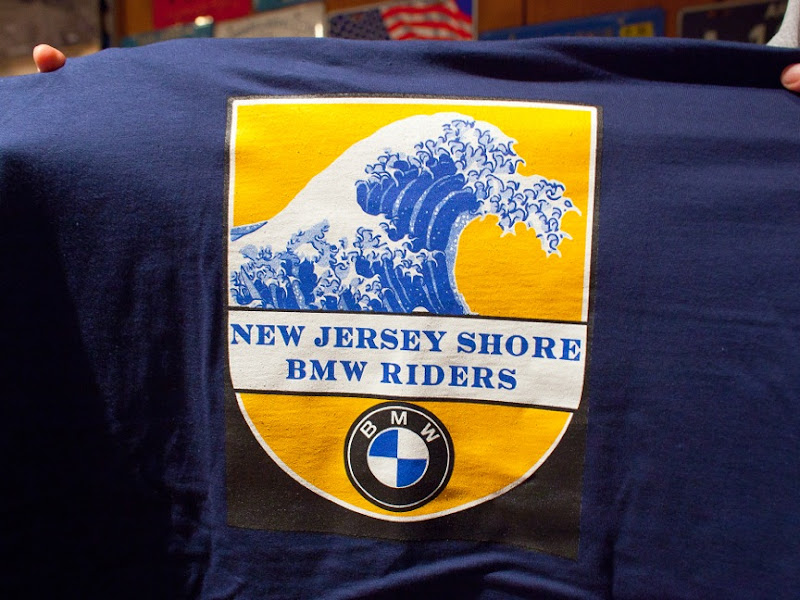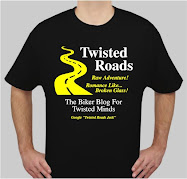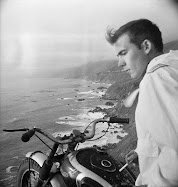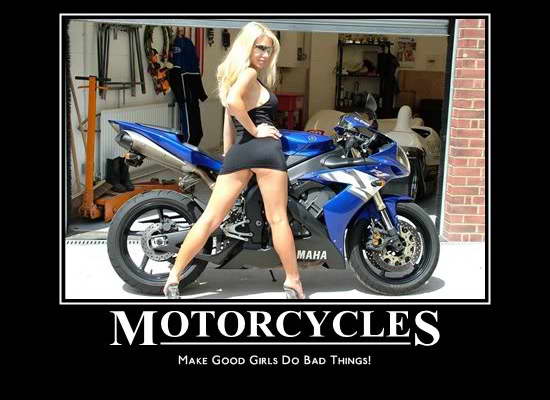It was a warm, hazy June morning in 1975.
My introduction to the great federal highway system, constructed under the defense budget in the administration of President Dwight D. Eisenhower, was the stretch of Interstate 80 (I-80), from Wayne, NJ to the Delaware Water Gap (on the Pennsylvania border). It was six to eight lanes wide, with great shoulders, sweeping curves, cool changes in elevation, and flawless pavement. Traffic in New Jersey had yet to reach the maximum carrying capacity of this roadway, and wouldn’t for another 9 years
Technically speaking, I could have ridden this pavement from Wayne, NJ to the Pacific Ocean. It was my idea of an America AutoBahn and represented one of the last great civil engineering accomplishments of the US, built at a time when this country could do anything better than anybody else.
The best aspects about this stretch of I-80 were the long, straight sections that ran for a few miles at a time. (One of the provisions of the Interstate Highway System was that one mile in every four of the roadway was supposed to be able to accommodate the landings and take-offs of military aircraft.) This made it possible to clearly identify the white cruisers of the New Jersey State Police sitting on the broad, green medians.
The feeder ramp coming off US-46 was an abortion from the moment of its design. You came off US-46 from the right only to find yourself in the left half of the ramp, merging with exiting traffic from I-80 on the right, then dancing around vehicles bound for NJState Route-23. There were two lanes of traffic routed for westbound I-80, which then merged into one, before pouring onto the “super highway.” I passed through all this in about 4 seconds, glancing over my left shoulder as I signaled to enter the interstate, now on my left.
My dad taught me to drive when I was 16-years-old. He had all the patience of a B-17 check pilot on a bombing run over Dresden. A chief officer on the Jersey City Fire Department, he insisted you did things his way.
“After confirming you can enter the roadway, make sure you are going the same speed or faster than the traffic on the highway,” said my dad. “The last thing you want to do is cause a line of cars, or worse, trucks, to slam on their brakes to avoid hitting you. You can slow down when you’re in a safe position.”
“Thanks for the advice, Pop,” I muttered into my helmet. Actually, I muttered it into the wind. The helmet was an open-faced, minimal protection brain-bucket. My eyes were wrapped in a pair of yellow-tinted ski-goggles.
Then I twisted the throttle an inch.
The motorcycle was a 1975 Kawasaki H2 that I have written about before. I have described this machine as one of the most primitive motorcycles ever built, and I wasn’t lying. But in 1975, it’s sole disk brake in the front was much better than most of the drum bakes that were still quite common then; and its three cylinder, two stroke motor always started easily (unless the plugs were fouled), and nearly all of the bike’s muscle was on the high-end of the tach.
The bike responded to twisting the throttle like a lynx might have reacted to getting its tail pulled. It surged forward with a growl from its mechanical soul... (That’s bullshit. Each cylinder in that Kawasaki’s three-cylinder motor hated the other two. There was a sudden lurch of forward motion as gasoline and oil exploded in a free-for-all eruption of power, six inches beneath the gas tank. The bike had its own peculiar sound, which I have described as a lawnmower that got kicked in the balls. That’s not really true either. It sounded more like a large outboard motor running in a lake of air.)
I merged onto I-80 and held the throttle open in a very loose interpretation of my dad’s instructions. The speedo read 88mph and continued to climb. I glanced into the mirror on the left to see if I was leaving a smoke screen. The image in the left mirror was that of blurred traffic behind me, getting smaller as the convex mirror got farther away. If the engine was smoking (which it did at any sudden influx of throttle), it had already stopped. (It seldom smoked when really hot.)
The front wheel felt light at 98mph, and I crouched closer to the gas tank to get more of my upper body out of the wind. I was now moving faster than I had ever pushed a vehicle before, and realized I still had a half inch to go on the throttle.
“This is why we’re here today,” I said to myself, twisting the right grip to the stop.
The speedo was now reading 104mph and continued to climb, but with less drama. I was entering a gentle curve, just before Parsippany, yet the front wheel still felt quashy. I hit the front brake with a light touch to see if I could settle a bit on the forks, and nearly pissed myself with the shudder that ran through the machine. I had no problem negotiating the sweeper, but covered the entire width of the middle lane instead of staying in track.
I began backing down at 107mph — for several reasons.
There was no windshield on this bike and I found the wind hellish. It was whipping my jacket into a frenzy, and I found it pushing back against the edges of my open face helmet.
I got spooked by the lightness of the front wheel at this speed.
A fucking bumble bee the size of a softball hit me on the cheek and I thought I had been shot in the face.
I slowed to get off at the next exit, with the intent of getting coffee someplace on US-46 (which runs parallel to I-80 at that point), and a New Jersey State Trooper rocketed past me. “Fuck you, Bullwinkle,” I said to myself. The Kawasaki H2 ran best at 80-85 mph, when all three cylinders found themselves in agreement. There was still plenty of “ooomph” to pull away from the pack, and life was plenty exciting at that speed.
A speed of 107mph was very respectable performance for a stock motorcycle, 6 weeks out of the showroom in 1975. It would be nothing today. But I had nothing to compare it with in those years, except my friend’s Norton Commando. (And the Kawasaki had no problem puling away from the Norton.) At the risk of being judged a pussy at 18-years-old, I must confess to the gentle Twisted Roads reader that I did not push the H2 to that degree again.
Twenty-Nine Years Later.........................................
I was headed south to Maggie Valley, NC from West Chester, PA — for a great event called the BuRP Rally — and my ride was a 1986 BMW K75, with a rare Sprint Fairing. The K75 holds a special status among BMW-riding “K” bike enthusiasts for having the most trouble-free, bullet-proof, absolutely minimal vibration (none) motor in an overall visual package that can best be described as “uninspiring.”
I have written about this at length.
In my humble opinion, without the addition of the Sprint Fairing, the Krauser Fairing, or the Parabellum “Scout” Fairing, the K75 is one of the ugliest motorcycles the world has ever seen. The early design had a really douchy square headlight . (Motorcycles should have round headlights.) The exception to this rule is the priceless, two-wheeled art work owned by Harold Gantz (of New Jersey), which is just stunning. The K75 design (even modified) is truly an acquired taste. Yet riding one of these machines for about 250 feet is all the acquiring a discerning rider requires. The K75 is one of motorcyclings best-kept secrets.
The BuRP Rally was to be my first motorcycle event in which I would be meeting and riding with 50 or 60 riders (all new acquaintances on various marques), over the mythical Blue Ridge Parkway, and staying in a resort area that is known for some of the best riding in the country... But it had been over 20 years since I had taken a long trip by motorcycle.
And I got spooked.
This was long before my membership in the Mac-Pac (the premier charted BMW riding club serving southeastern Pennsylvania), and the thought of riding most of this distance alone (which didn’t happen) suddenly became very unappealing. I had arthritis in both knees and longish trips (100 miles) got painful. I had never been over most of the roads I’d be taking. The uncertainty factors of hitting a deer, getting hit by lightning, running off the road, or being eaten by pythons were running wild in my mind. I had already vowed not to ride on Interstates, not to ride in the dark, not to ride in the rain, and not to go fast. The woman I was living with at the time said, “So why not just sell the bike? Then you can also cut off your dick and feed it to feral cats.” (She was free with highly supportive advice like this.)
The imagined horrors of this delightful run preyed on my mind so badly, that I left four hours late. A dent of this significance in my schedule required me to take an Interstate to make up for lost time, and I reluctantly headed west on the Pennsylvania Turnpike. This was the first time I had ridden an Interstate on a motorcycle since 1979. (It should be noted that I was a re-entry rider after a 25-year absence.)
I got into the right lane without being killed and drew a long breath. Glancing down at the speedo, I noted I was clipping along at 67 mph, which was the world’s speed record set by a locomotive in 1869. Twenty minutes later, I was behind a long line of trucks and still in the same county I’d started in.
My K75 was already 20-years-old that year, though with only 38,000 miles on a motor designed to run to 150,000 (before needing a valve adjustment), it was judged to be barely past “break-in.” I was told I could safely ride it like it was “brand new.”
“Fuck this shit,” I thought. “I’d rather be dead than ride like this another 50 feet.”
In the motorcycle safety class, they teach you to get around a truck pronto, rather than linger in the “No Zone,” where the driver can’t see you. This “No Zone” was 15 trucks long.
I pulled in the clutch, raised the RPM, and down-shifted into fourth gear. The K75’s engine actually snarled and the distance between me and the last truck in the conga line dramatically dropped. Glancing left, I shifted back into fifth and opened that old sucker up. I would like to say it dematerialized into hyper-space — like the Millennium Falcon of Star Wars fame — but that would be a lie and you’d know it. The K75 weighed substantially more than the H2 and had the same horsepower, about 71.
What the bike did was steadily pull ahead without any compromise in its stance on the road. At 88 mph, the front wheel was planted in its track like an oak tree. Gentle input to the handlebars tilted this thing like an amusement park ride on tracks. I shot past the lead truck at 95 mph, as the driver looked down and laughed.
Holding the throttle steady, the speedo eclipsed 100 mph and insinuated its way upward. I was astounded at how steady the bike felt. Shifting my ass around on the seat had no effect on its forward trajectory. I hit a slight bump at 107 mph, and caught about 1/4 inch of air. I could see reasonably far behind me, as neither of my rear-view mirrors had the slightest tremble. Neither did the grips nor pegs transmit anything but the true language of the road’s surface. The “Sprint Fairing” did a great job of cutting the wind, and my Joe Rocket Mesh Riding Gear did not flap or whip around. The windscreen went from crystal to opaque as hundreds of bugs added their carcasses to the plexiglas. The Nolan flip-face helmet neither caught the wind nor amplified it.
The tach was holding steady at a little over 7 grand, and I backed down to a even 100 mph.
“What the fuck were you afraid of?” I asked myself? “This is better than the first time you got your horn honked.”
What I should have been afraid of was getting shot by a firing squad of Pennsylvania State Troopers. I realized that this motorcycle was fully capable of running at 100 mph all day, and taking it in stride. And I realized that more than anything else, I wanted to ride at 100 mph all day.
Reluctantly, I slowed to 75, and felt like I was getting gypped. After going like hell, 75 mph seemed like reverse. Within 24 hours, I would ride in the dark... I would ride in the rain... I would dodge deer... I would fight off a python named “Fred” (a pole dancer in a strip joint sicced it on me)... And I would look forward to the stretches of road on which I could stampede all 71 horses of that K75.
The Kawasaki H2 did not encourage high-speed trolling in anything other than a straight line. You could pick up the front wheel by sneezing. Built 11 years later, the BMW K75 sneered at 100 mph. While that speed was close to bike’s prime output, it would do it without hesitation, and hold it while whistling a tune. Now just about every bike built from 1986 to 1995 will hit and hold 100 mph. But damn few can do it with such elan. Riding buddy Dick Bregstein and I would regularly venture into “three digit” territory, and I miss that thrill.
I look forward to my first BMW K1200. I want to know what 130 mph feels like, just before I'm checked into a country jail.
A Rider’s Light Dims... Godspeed Mack Harrell
It is with sadness that I write of the passing of Mack Harrell, a rider of unique and strong character. Karen, his wife, wrote to me yesterday with the news that Mack had died peacefully in his sleep, on March 28th, finally yielding to Parkinson’s Disease, which had ended his riding career three years ago.
 Above: Mack Harrell at the State Line Lookout, Palisades Interstate Park, January 1, 2008
Above: Mack Harrell at the State Line Lookout, Palisades Interstate Park, January 1, 2008I first met Mack, and then his wife, through a rider’s forum conducted by About.com in 2005. Mack was one of the first riders to respond my “Annual Amish Horsepile Swerve Ride,” and then joined me on a number of other runs. Most notable was “My Return To Jersey City,” in which we met at Exchange Place, on the waterfront. We then rode up through Palisades Interstate Parkway. Details of that ride can be found here.
 Above: Mack Harrell astride "The Queen," in view of the World Trade Center Site from Exchange Place, NJ. It was freezing cold that day, and Mack was idling the engine to run the heated gear.
Above: Mack Harrell astride "The Queen," in view of the World Trade Center Site from Exchange Place, NJ. It was freezing cold that day, and Mack was idling the engine to run the heated gear. I vividly remember two other runs with Mack: one through Gettysburg and another through rural Pennsylvania, just this side of Chambersburg. In each case, he was riding a super-powerful Japanese liter bike, and made it jump through hoops. He focused on the road when riding, and on the road entirely. On one ride past Dover Air Force Base, we shot by the remains of crashed C147. This plane was a lot bigger than a Boeing 747, and sat off in a field in two pieces, each the size of an apartment house.
Stopping for a break five miles up the road, I said to Mack, “That must have been some plane crash, huh?”
Mack looked at me, blinked, and said, “What plane crash? What are you talking about?”
He rode a yellow and black GS, named “The Queen Bee.” Mack's wife, Karen, frequently rode pillion and joined us for the famous Haggis Run, one cold November.
Godspeed, Mack. I'm sure all Twisted Roads readers, both those who knew Mack in person, and those who rode with him in story, join me in extending my condolences to his wife, Karen.
©Copyright Jack Riepe 2012
All rights reserved


























